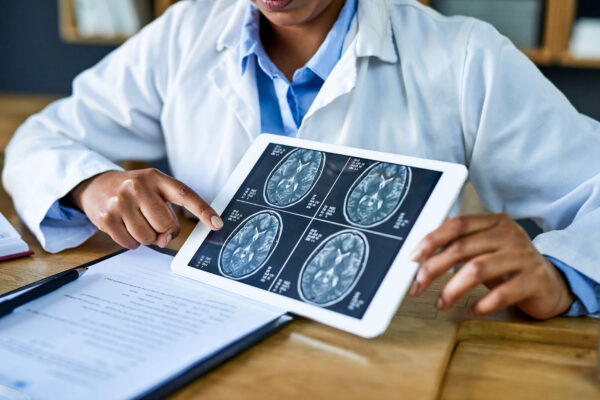
Our practice treats a variety of conditions:
- Neurology Consult
- EMG and Nerve Studies
- Testing for Myasthenia Gravis (RNS)
- EEG Routine
- EEG Ambulatory
- Botox for Headache
- Botox for Dystonia
- Botox for Spatiscity
- Deep Brain Stimulation (DBS)
- Vagal Nerve Stimulation (VNS) integration and adjustment
- Nerve Block
- Trigger Point Injections
Electrodiagnostic services provided include EMG (motor and sensory nerve conduction studies and evoked potentils) & EEG.
EMG
St. Mary's Neurology Center's EMG LAB is a full service laboratory providing nerve conduction studies (Motor and Sensory), electromyography (EMG), single fiber EMG, repetitive nerve stimulation studies, and autonomic testing. Motor conduction studies includes even the proximal nerves like axillary nerve and spinal accessory nerve.
Conditions commonly evaluated include:
- Radiculopathy
- Nerve Entrapment like Carpal tunnel syndrome.
- Polyneuropathy
- Muscle Disease
- Plexopathy
- Myasthenia Gravis and other diseases of the neuromuscular junction
- Motor neuron disease
EEG
The EEG laboratory test is an objective way to determine if there is a functional and organic change in the brain. The MRI and CT can determine structural changes, but the EEG can also detect the functional changes. One excellent example is that the MRI could be normal before and after insulin coma because no structural change has occurred, but the EEG would be very abnormal in the comatose state. Since epilepsy has so many complex manifestations, a skilled epileptologist cannot always determine if a given episode, as presented by the history or even reviewed on film, is or is not epileptic. Only an EEG with ictal rhythms or interictal discharges can make such a diagnosis of epilepsy relatively certain.
Conditions commonly evaluated include:
- All patients with episodic symptoms to see if the episodes are epileptiform with ictal rhythms during the episodes or interictal discharges between the episodes.
- Mental conditions, like learning disabilities, attention deficit, hyperactivity, etc. without episodic symptoms, but with a compromised mentation. At times, these conditions may be associated with epileptiform discharges that can result in a transient cognitive impairment.
- Comatose patient that may have a subclinical status epilepticus as the basis of their coma.
- Possible brain dead patients to see if any cerebral rhythms can be found.
- All patients with possible brain damage of any type to evaluate if the damage is generalized or focal and also the degree of disturbance.
Special procedures in the EEG Laboratory include:
- Simultaneous video-EEG in order to study the details of an episode and correlation with the EEG change.
- Brain stem auditory, visual, and somatosensory evoked potentials to check the integrity of those three modalities and the localization of any disturbance within their pathways (done at the hospital).

